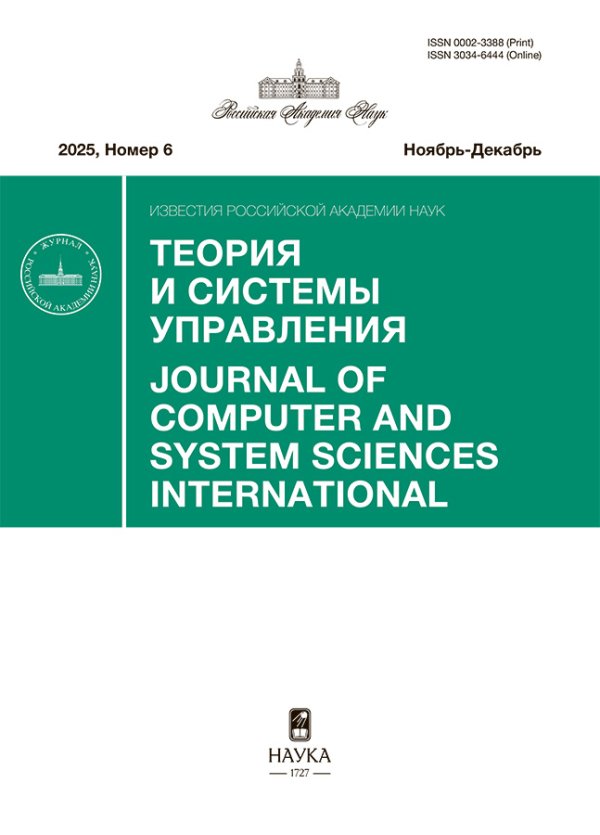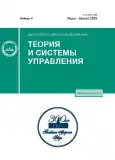НОВЫЙ ДВУХУРОВНЕВЫЙ МЕТОД МАШИННОГО ОБУЧЕНИЯ ДЛЯ ОЦЕНИВАНИЯ ВЕЩЕСТВЕННЫХ ХАРАКТЕРИСТИК ОБЪЕКТОВ
- Авторы: Докукин А.А.1, Сенько О.В.1
-
Учреждения:
- Федеральный исследовательский центр “Информатика и управление” РАН
- Выпуск: № 4 (2023)
- Страницы: 17-24
- Раздел: ТЕОРИЯ СИСТЕМ И ОБЩАЯ ТЕОРИЯ УПРАВЛЕНИЯ
- URL: https://journals.rcsi.science/0002-3388/article/view/136861
- DOI: https://doi.org/10.31857/S0002338823040029
- EDN: https://elibrary.ru/OCEZGW
- ID: 136861
Цитировать
Полный текст
Аннотация
Рассматривается новый двухуровневый ансамблевый регрессионный метод, его модификации и применение в прикладных задачах. Ключевой особенностью метода является нацеленность его на построение ансамбля предикторов, хорошо аппроксимирующих целевую переменную, и при этом состоящего из алгоритмов, по возможности отличающихся друг от друга по вычисляемым прогнозам. Построение ансамбля, обладающего указанными свойствами, на первом этапе производится через оптимизацию специального функционала, выбор которого теоретически обосновывается в работе. На втором этапе по сформированным этим ансамблем прогнозам вычисляется коллективное решение. Кроме того, описываются некоторые эвристические модификации, положительно сказывающиеся на качестве прогноза в прикладных задачах. Эффективность метода подтверждается результатами, полученными для конкретных прикладных задач.
Об авторах
А. А. Докукин
Федеральный исследовательский центр “Информатика и управление” РАН
Email: dalex@ccas.ru
Россия, Москва
О. В. Сенько
Федеральный исследовательский центр “Информатика и управление” РАН
Автор, ответственный за переписку.
Email: senkoov@mail.ru
Россия, Москва
Список литературы
- Положение о ЦКП “Информатика” // [Электронный ресурс]. Режим доступа http://www.frccsc.ru/ckp (дата обращения 14.02.2023).
- Zhou Z.H. Ensemble Methods: Foundations and Algorithms. N.Y.: Chapman and Hall/CRC, 2012.
- Hastie T., Tibshirani R., Friedman J. The Elements of Statistical Learning Data Mining, Inference, and Prediction. Springer Series in Statistics. N.Y.: Springer, 2009.
- Breiman L. Random forests // Machine Learning. 2001. V. 45. № 1. P. 5–32.
- Schapire R.E., Freund Y. Foundations and Algorithms. Cambridge, Massachusetts, London: MIT Press, 2012.
- Ho T.K. The Random Subspace Method for Constructing Decision Forests // IEEE Transactions on Pattern Analysis and Machine Intelligence. 1998. V. 20. № 8. P. 832–844.
- Garcia-Pedrajas N., Ortiz-Boyer D. Boosting Random Subspace Method // Neural Networks. 2008. V. 21. № 9. P. 1344–1362.
- Zhuravlev Yu.I., Senko O.V., Dokukin A.A., Kiselyova N.N., Saenko I.A. Two-Level Regression Method Using Ensembles of Trees with Optimal Divergence // Doklady Mathematics. 2021. V. 103. P. 1–4.
- Pedregosa F., Varoquaux G., Gramfort A. et al. Scikit-learn: Machine Learning in Python // Machine Learning Research. 2011. V. 12. P. 2825–2830.
- Wolpert D.H. Stacked Generalization // Neural Networks. 1992. V. 5. № 2. P. 241–259.
- Braverman E.M., Muchnik I.B. Structural Methods for Processing Empirical Data. M.: Nauka, 1983.
- Senko O.V., Dokukin A.A., Kiselyova N.N., Dudarev V.A., Kuznetsova Yu.O. New Two-Level Ensemble Method and Its Application to Chemical Compounds Properties Prediction // Lobachevskii Journal of Mathematics. 2023. V. 44. № 1. P. 188–197.
- Rafiei M.H., Adeli H. A Novel Machine Learning Model for Estimation of Sale Prices of Real Estate Units // J. Construction Engineering & Management. 2015. V. 142. № 2.
- Сенько О.В., Чучупал В.Я., Докукин А.А. Неинвазивное оценивание уровня артериального давления с помощью кардиомонитора CardioQvark // Математическая биология и биоинформатика. 2017. Т. 2. № 12. С. 536–546.
- Mostofi F., Toğan V., Başağa H.B. Real-estate Price Prediction with Deep Neuralnetwork and Principal Component Analysis // Organization, Technology and Management in Construction. 2022. V. 14. № 1. P. 2741–2759.
Дополнительные файлы










